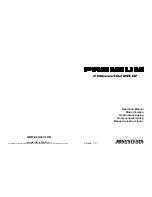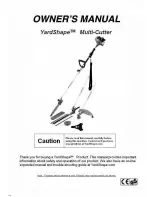
10
Li-Ion battery care & maintenance
Lithium-Ion rechargeable batteries require routine maintenance and care in
their use and handling. Read and follow the guidelines to safely use Lithium-
Ion batteries and achieve the maximum battery life span.
•
Do not leave batteries unused for extended periods of time, either in
the machine or in storage. When a battery has been unused for 3
months or more, check the charge status and charge or dispose of the
battery as appropriate.
•
The typical estimated life of a Lithium-Ion battery is about two years or
300 charge cycles, whichever occurs first. One charge cycle is a period
of use from fully charged, to fully discharged, and fully recharged
again.
•
Rechargeable Lithium-Ion batteries have a limited life and will
gradually lose their capacity to hold a charge. This loss of capacity
(aging) is irreversible. As the battery loses capacity, the length of time it
will power the product (run time) decreases.
•
Lithium-Ion batteries continue to slowly discharge (self-discharge) when
not in use or while in storage. Routinely check the battery’s charge
status.
•
Carefully monitor batteries that are approaching the end of their
estimated life.
•
Consider replacing the battery with a new one if you note either of the
following conditions:
The battery run time drops below about 60% of the original run
time.
The battery charge time increases significantly.
•
If a battery is stored or otherwise unused for an extended period, follow
the storage instructions. If damaged, do not attempt to recharge it or
to use it. Replace it with a new battery.
Storage
•
Charge or discharge the battery to approximately 50% of capacity
before storage.
•
Charge the battery to approximately 50% of capacity at least once
every six months.
•
Remove the battery and store it separately from the product.
•
Store the battery at temperatures between 5°C and 20°C (41°F and
68°F).
Please note:
Higher temperatures (above 20°C or 68°F) reduce
the battery storage life.































